Peer-to-Peer Insurance: Legal Structures and Regulations
Introduction to Peer-to-Peer Insurance
Peer-to-peer (P2P) insurance is revolutionizing the insurance landscape by offering a collaborative approach to risk management, where individuals come together to pool their resources in order to support one another. This innovative model not only enhances community engagement but also potentially reduces costs for participants. As the insurance industry evolves, understanding the legal structures and regulations surrounding P2P insurance becomes critical for compliance and operational success. In this article, we delve into the legal frameworks that govern P2P insurance in various jurisdictions, focusing on best practices and compliance essentials from the U.S., U.K., and UAE perspectives.
What is Peer-to-Peer Insurance?
P2P insurance allows individuals to form groups, or “pools,” to collectively share the risk of insurable losses. If a claim arises, contributions from the pooled funds are utilized to cover losses rather than traditional insurance payouts. This framework fosters a sense of community while promoting transparency and lower administrative costs.
Key Characteristics of P2P Insurance
- Community-Driven: Members support one another, aligning incentives and ensuring that funds are used in the best interest of the group.
- Cost-Effective: By eliminating intermediaries, P2P insurance can lower premiums and enhance value for policyholders.
- Transparency: Members have visibility into fund management and claims processes, fostering trust among participants.
Legal Structures of P2P Insurance
The legal structure of a P2P insurance model can significantly impact its operation and regulatory requirements. Broadly, P2P insurance can be manifested through:
1. Mutual Insurance Companies
In this model, a group of individuals collectively owns the insurance company. Each member participates in decision-making and shares in any profits or losses. Mutual insurance companies are subject to specific regulatory requirements, including:
- Licensing: These entities must be licensed by the state or relevant authority to operate legally.
- Capital Requirements: Regulators may set minimum capital and surplus requirements to ensure solvency.
2. Cooperative Societies
Cooperatives may serve as a foundational structure for P2P insurance, wherein members manage the entity collectively. This structure can vary widely based on local cooperative laws and can face regulatory scrutiny for compliance with insurance regulations.
3. Digital Platforms
Emerging P2P insurance models often leverage technology to operate on digital platforms. These platforms must comply with data protection laws and insurance regulations, including:
- Compliance with E-commerce Regulations: Digital platforms must adhere to online transaction laws, ensuring consumer protection and transparent operations.
- Consumer Data Protection: Ensuring member data is safeguarded against breaches is critical for compliance.
Regulatory Environment
Understanding the regulatory landscape is vital as P2P insurance expands globally. Regulations vary significantly by jurisdiction and can be categorized into several key areas:
1. Licensing and Registration
P2P insurance models often require specific licenses to operate legally. In the U.S., state insurance regulators oversee licensing, which may necessitate fulfilling particular conditions to obtain authorization. Similarly, in the U.K. and UAE, regulatory bodies ensure that P2P insurance providers comply with their respective licensing frameworks.
2. Corporate Governance
Establishing a robust governance framework is essential for P2P insurance practices. This includes promoting accountability, transparency, and ethical management of pooled resources. Regulators emphasize governance structures that prevent misuse of funds and protect the interests of participants.
3. Consumer Protection Regulations
Ensuring that participants are well-informed about risks, coverage, and terms of service is paramount. Regulators mandate clear disclosures, promoting transparency in policy terms to safeguard consumer rights.
4. Risk and Solvency Regulations
P2P insurance frameworks must maintain adequate reserves to cover potential claims. Regulatory authorities typically impose risk management standards requiring companies to maintain sufficient capital to ensure financial soundness.
Best Practices for Compliance
To navigate the complex regulatory landscape successfully, P2P insurance entities should adopt best practices in compliance:
1. Engaging Legal Counsel
Consulting legal experts familiar with insurance law in the relevant jurisdiction can help P2P models navigate compliance challenges effectively.
2. Implementing Strong Governance Structures
Establishing clear governance frameworks ensures that P2P insurance entities operate transparently and ethically, thereby reinforcing consumer trust.
3. Regular Compliance Audits
Conducting internal compliance audits can help identify potential issues before they escalate. This proactive approach fosters accountability and trust among members.
4. Emphasizing Training and Compliance Culture
Training staff and participants on compliance expectations fosters a culture of ethical behavior and awareness, strengthening the overall integrity of the P2P model.
Global Perspectives on P2P Insurance Regulations
Globally, the regulatory approach to P2P insurance varies, each jurisdiction adapting policies that reflect its unique market dynamics.
U.S. Regulations
The U.S. insurance landscape is fragmented, with each state imposing different regulations. Regulatory bodies allow innovative approaches in P2P due to the growing popularity of fintech and insurtech models. However, rigorous compliance remains a priority.
U.K. Regulations
In the U.K., the Financial Conduct Authority (FCA) oversees P2P insurance operations. The emphasis on consumer protection and corporate governance reflects the broader goals of ensuring fair retail insurance practices and fostering competition.
UAE Regulations
The UAE insurance market is rapidly evolving, with a regulatory framework consistently adapting to facilitate innovation. The Insurance Authority of the UAE plays a crucial role in licensing P2P insurance providers while ensuring compliance with best practices that align with international standards.
The Role of The Consultant Global
At The Consultant Global, we understand the complexities involved in navigating the legal frameworks and regulations surrounding P2P insurance. With extensive experience in the international consultancy landscape, our expertise positions us uniquely within the GCC and the UAE. Our team’s diverse skills and cultural fluency in English, Turkish, Azerbaijani, Russian, and French aid in comprehensively addressing client needs. Whether your organization operates in the government, private sector, or multi-cultural environment, we strive to be your trusted advisors in elevating your business.
Conclusion
As peer-to-peer insurance continues to innovate the insurance landscape, understanding the legal structures and regulatory requirements is paramount for success. It facilitates community engagement while fostering transparency and trust among participants. By adopting best practices in compliance and staying informed on regulatory updates, P2P insurance entities can thrive in this evolving market. The Consultant Global remains committed to empowering businesses with insights and strategic advice to navigate this complex terrain effectively. Together, we can elevate your P2P insurance endeavors to new heights of success.




Leave a Reply